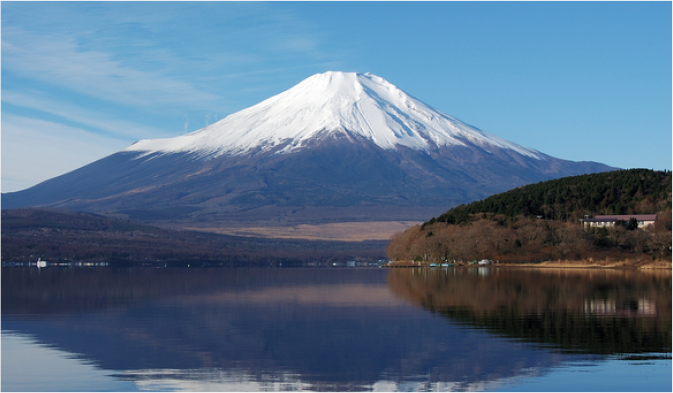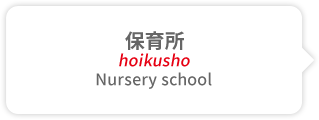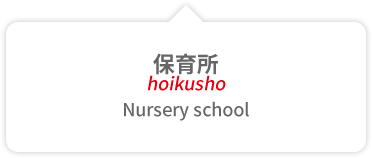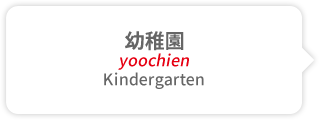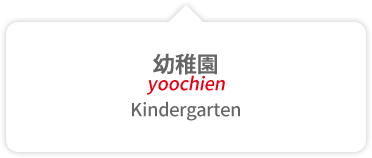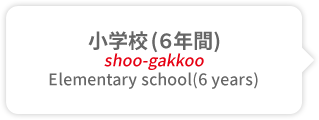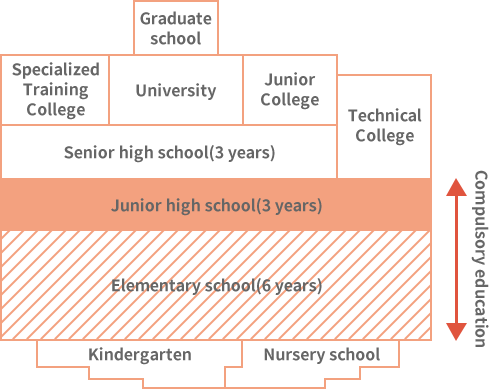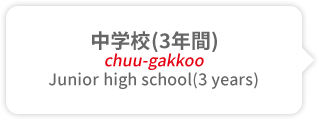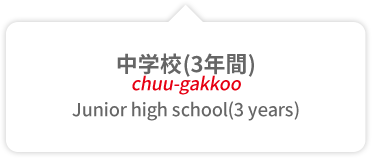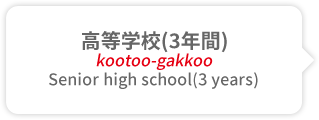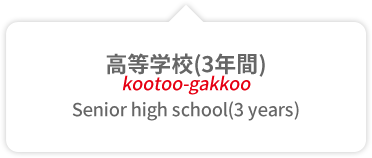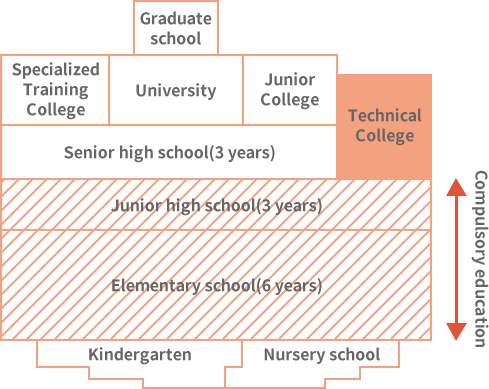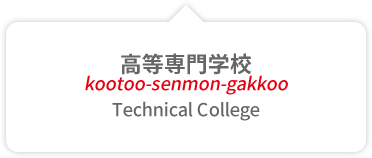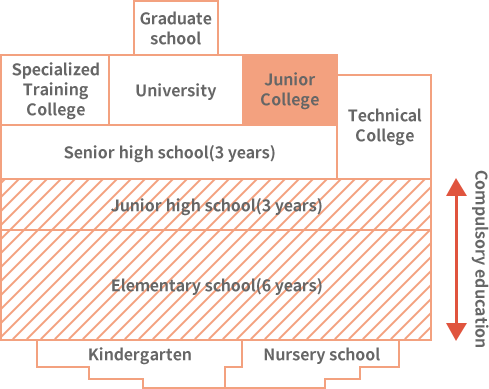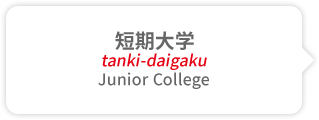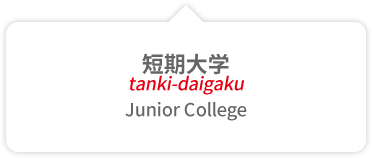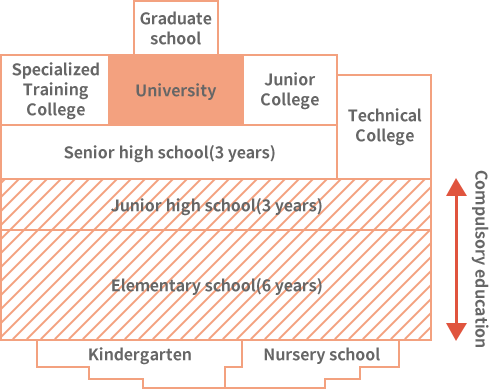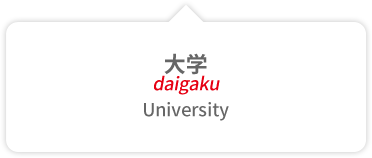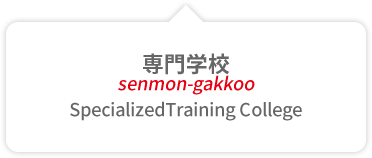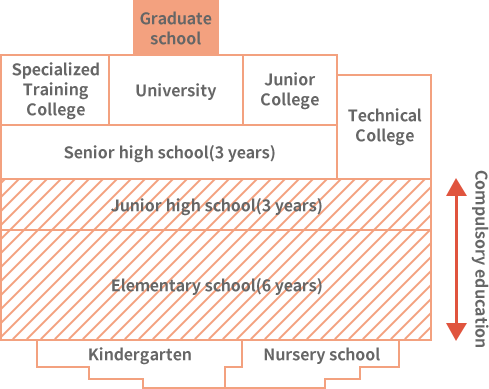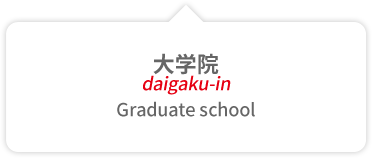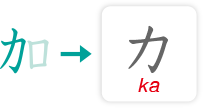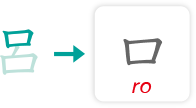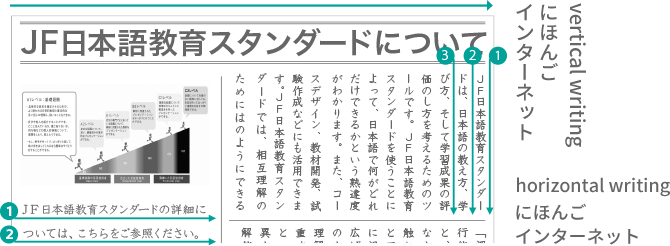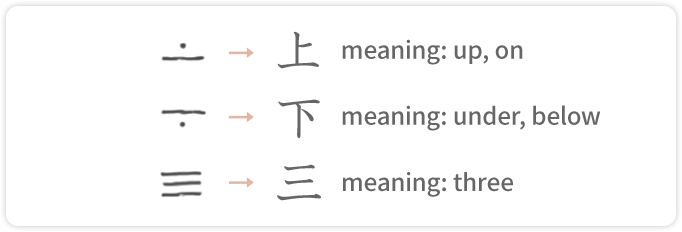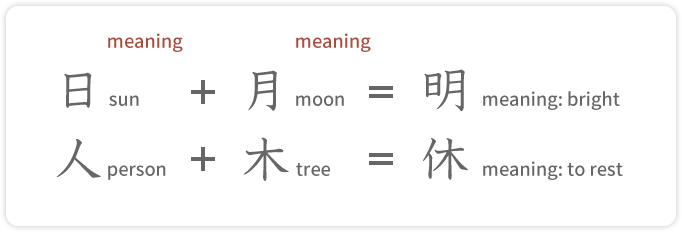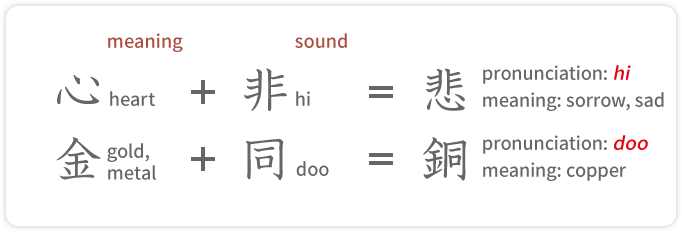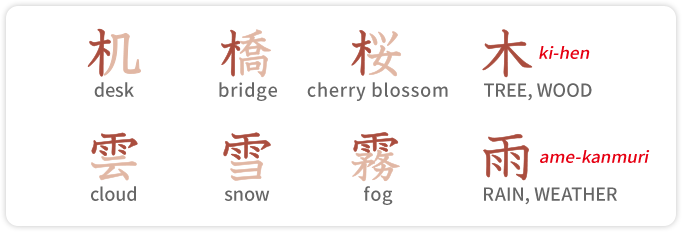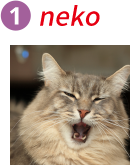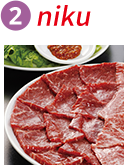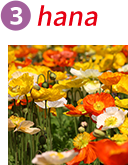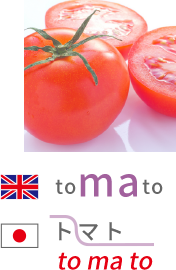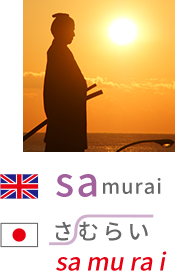Japan Knowledge
Japan is an island country.
It is mainly made up of 5 large islands.
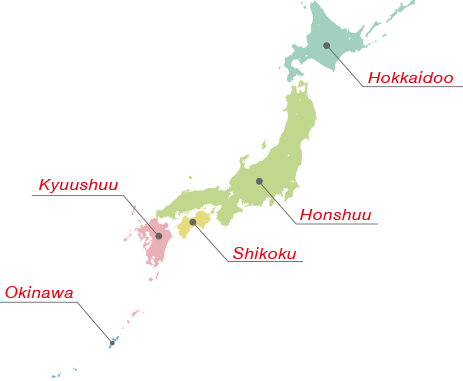
There are 7,000 small islands too.
Japan's population : Around 120,000,000 people
Area : Around 380,000 Km2
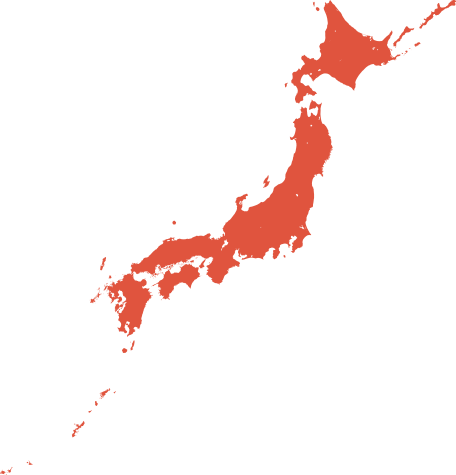
How does this compare to your
own country's population/area?
From North to South,
Japan is a long country.
This means that the climate differs
greatly between North and South.
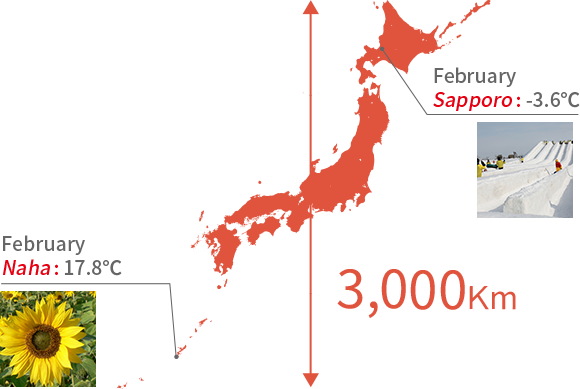
'Shinto' is an ancient Japanese religion.
There are over 85,000 Shinto shrines
in the whole of Japan.
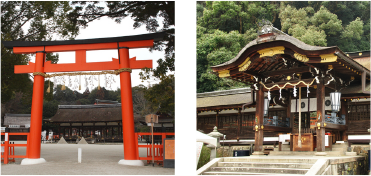
Shinto shrines

Buddhist temples
'Buddhism' was brought to Japan around the time
of the 6th century.
There are about 77,000 Buddhist temples
in the whole of Japan.
Japan's education system comprises
6 years of elementary school,
3 years of junior high and
3 years of senior high school.
There are 9 years of compulsory
education (elementary 〜 junior high).
Japan has the highest life expectancy in the world!
The average life expectancy is 84.2 years. (2016 WHO)
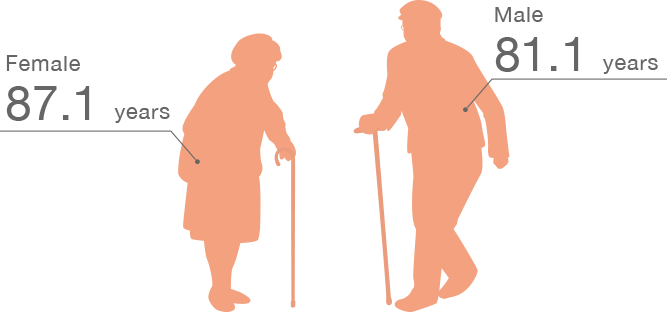
The birth rate for Japan
(The estimated number of
children 1 female will
give birth to during her lifetime)
is 1.44 (2016 Declining Birthrate
White Paper).
A declining birth rate and an aging
population are becoming
big problems in Japan.
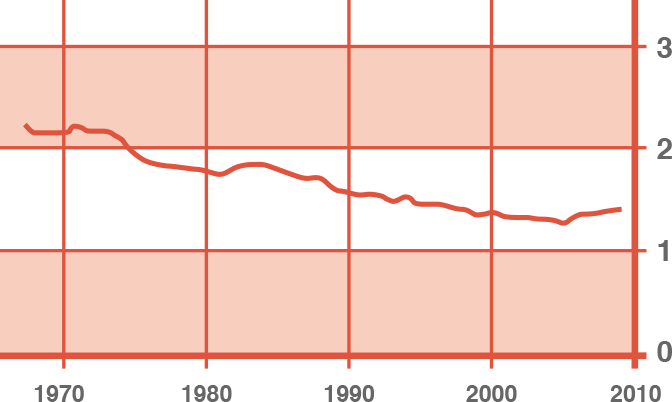
How does this compare with your own country?
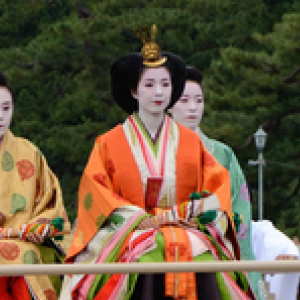
There are various styles of kimono,
Japan's traditional clothing.
The ‘Juunihitoe’ (十二単) is a kind ceremonial costume worn
by women during the Heian period (8th ~ 12th century).
The name means ‘ 12-layerd clothing’ .
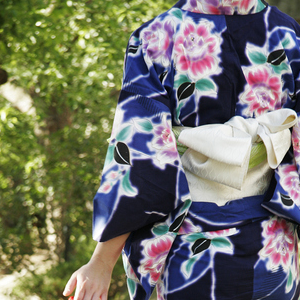
A simple kimono for use in summer is called a ‘yukata’.
Grammar
Particles
Particles are placed after nouns to denote the semantic relation with verbs and adjectives.
They are similar to prepositions in English.
English

Japanese

Noun gender/number
Japanese has no concept of noun gender or number.
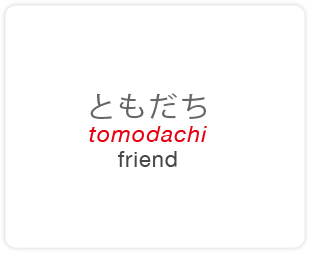


※‘Tomodachi’ is OK for any of the above. If you want to be more specific, you can say ‘otoko no tomodachi (male friend)’,‘onna no tomodachi (female friend)’, or ‘tomodachi san-nin (3 friends)’.
Gender/Number
The verbs and adjectives in a sentence do not change according to the gender or number of the subject noun.
Writing
There are 3 types of characters used
in the Japanese language.

In addition to these, Japanese also uses
roma-ji (a, b, c) and numerals (1, 2, 3).
From these kanji,
‘kana (hiragana and katakana)’ were created.
Hiragana are simplified forms of the kanji.

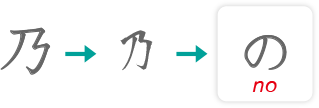
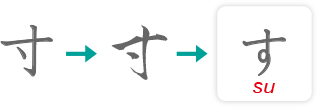

・With hiragana, 1 character expresses one syllable.
・The character itself has no meaning.
・Used mainly to write function words such as native
Japanese words or particles.

・With katakana too, 1 character expresses one
syllable.syllable.
・The character itself has no meaning.
・Used mainly to write foreign loanwords.

・Kanji have a both a sound(reading)and a meaning.
- sound : mai
- sound : nichi
- sound : mi (masu)
- meaning : every
- meaning : day, sun
- meaning : watch, see
Kanji
Look at these 2 sentences.
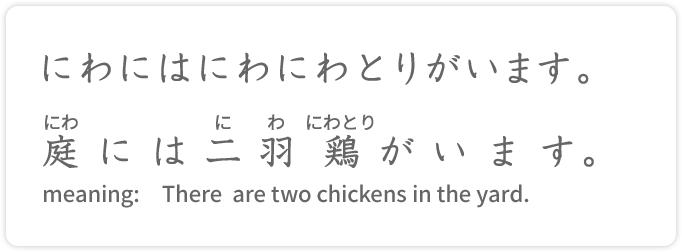
The 2 sentences are the same, but expressed in hiragana, only it becomes difficult to distinguish between separate words and their meanings.
How do you read the following kanji? Let’s listen.

All of them are read 「かみ」(kami). Homonyms are very common in Japanese, so kanji notation helps to differentiate clearly between the meanings of words are pronounced the same way.
Kanji origins
・If you get to know the origins of each kanji, it will be
of some help when you try to memorize them.
・Kanji origins fall into the following main groups:
(1)Those derived from pictographs
(2)Those in which combinations of points and lines
represent abstract concepts
(3)Those created by combining 2 or more kanji
(4)Those where the meaning and pronunciation
were matched together
Let’s take a look at each of these…
Radicals
・Every kanji has a radical.
・The radical is the base element used when classifying
kanji by their form.
・For example, kanji with the「木」(TREE, WOOD)
radical are characters that have a connection
with trees. with trees.
A4.
・About 3000 kanji are seen in Japan on an everyday
basis, though it is said that if you know about 2000
kanji you can understand 96% of the kanji
characters used in newspapers.
・Children study 1006 kanji at elementary school
(age 6 ~ 12)
Around 300 kanji are studied in a beginner-level
Japanese course.
Pronunciation
Vowels

Japanese has just 5 vowels.
A vowel can be attached to most of the
consonants to produce a kana character.
Mora
Essentially, spoken Japanese more or less follows a steady character to character rhythm.
The time taken to say one hiragana character is called mora.
One mora is indicated by one beat.

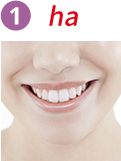
は
tooth

て
hand

め
eye


たまご
egg
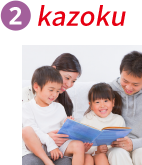
かぞく
family
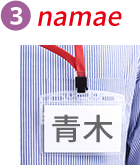
なまえ
name
Can you see that the length of the sound for a
singlecharacter is pretty much the same each time?
Now, let's do some practice!
Accents 2
The pitch always changes between the first and second sounds.
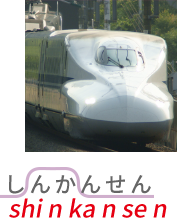
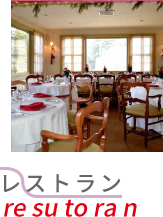
※ You won’t find
an accent like this:




